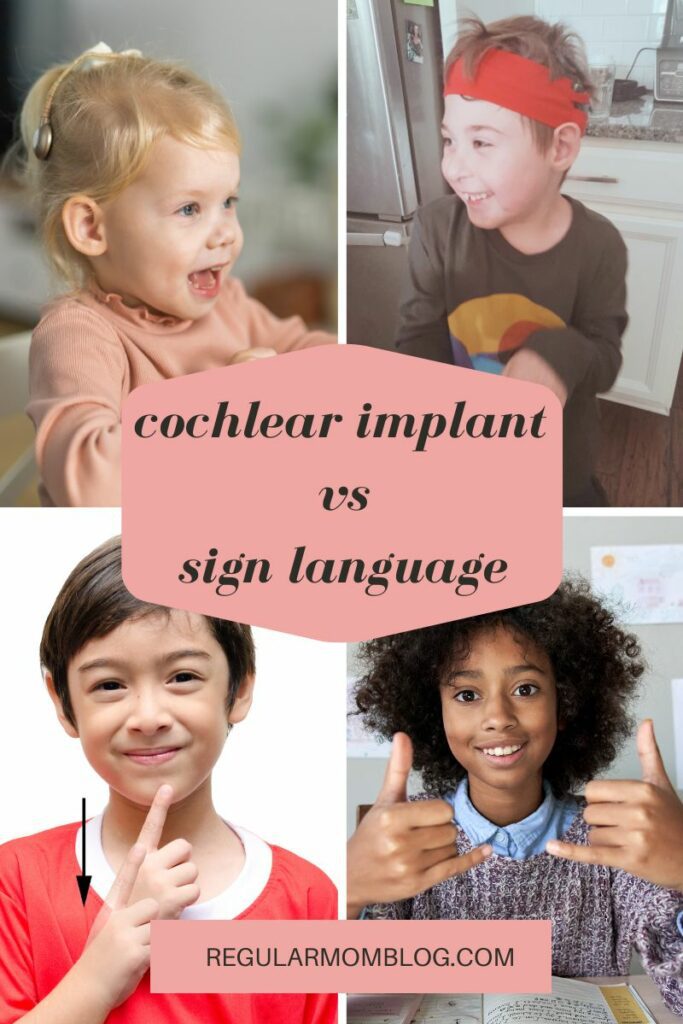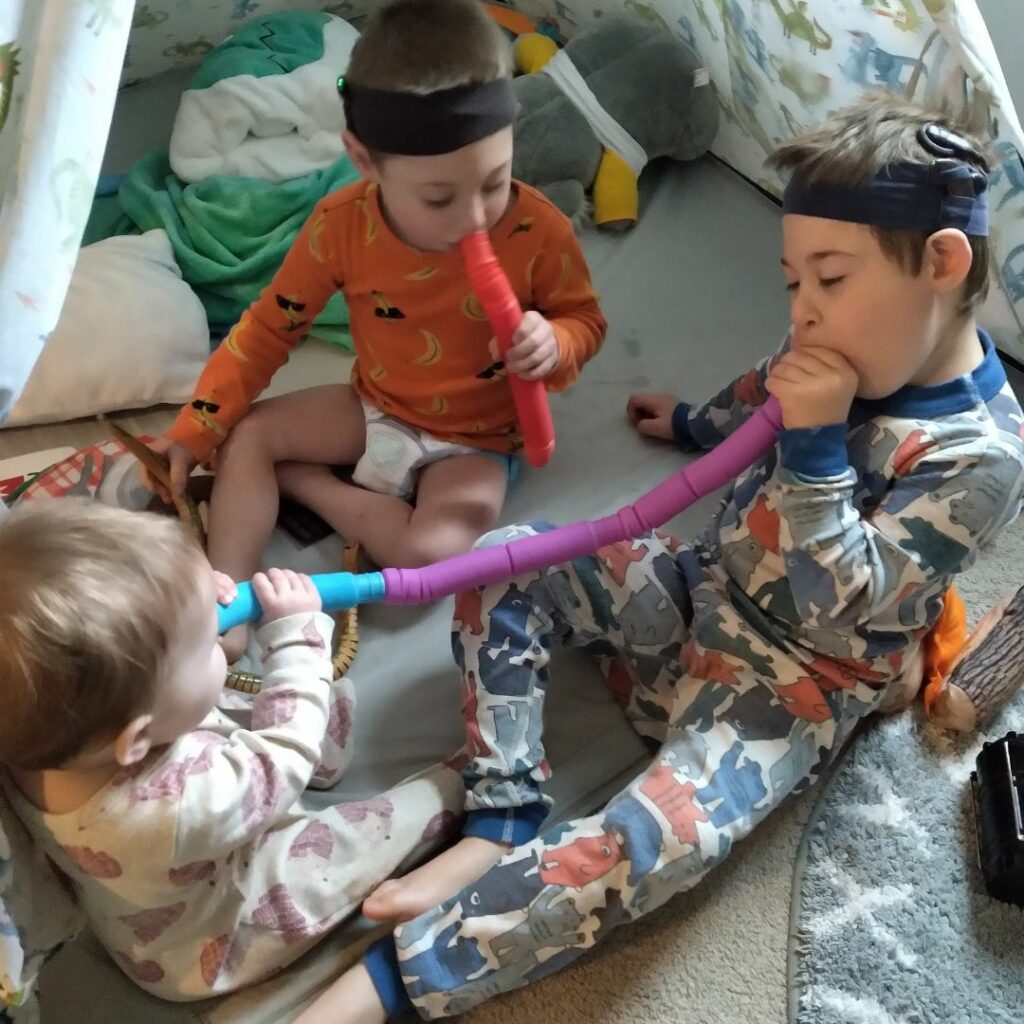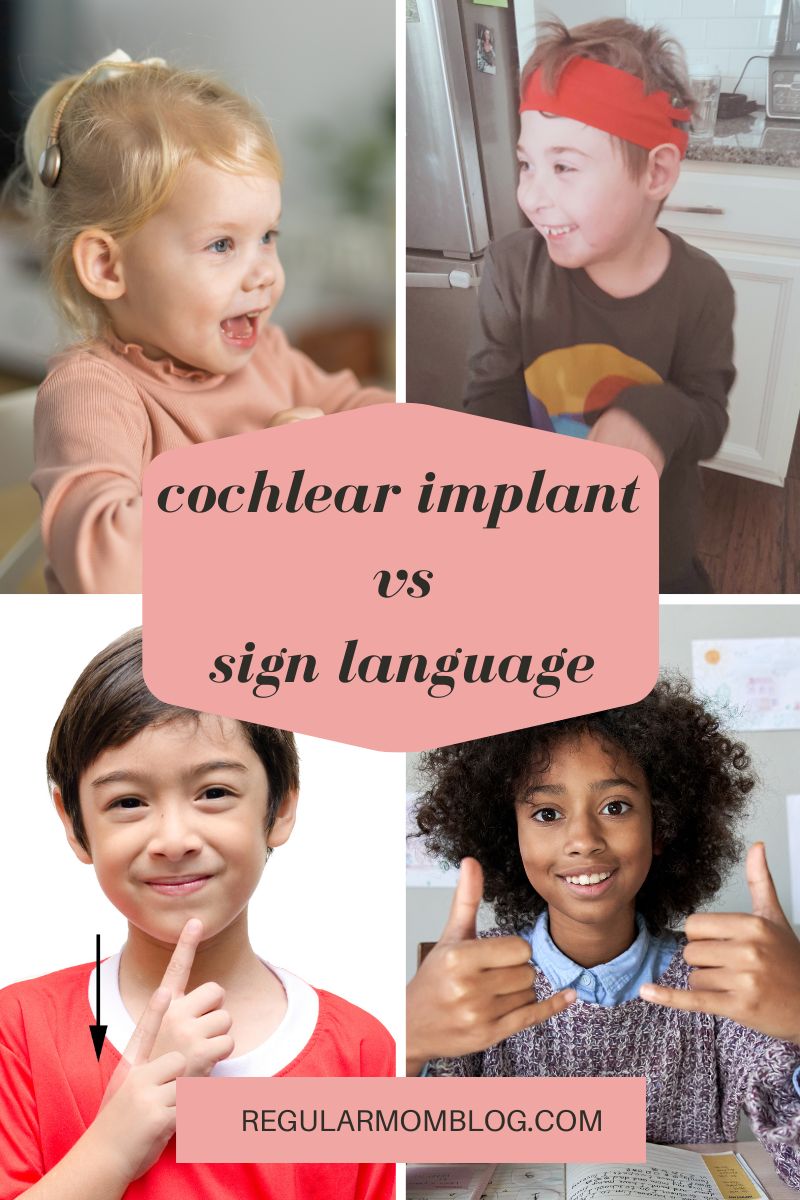advocacy
It’s time to get clear on a language strategy for your child so that you can consistently practice language in your home and watch your child’s communication soar in less time!
Welcome!
I want to show you how to build better language skills at home so you can also parent with clarity and confidence!
Categories
hearing loss
sensory activities
sign language
1:1 Language Coaching
These are the kinds of resources that you will find on my blog!
Happy reading!
Cochlear Implant vs Sign Language for Children with Hearing Loss
August 24, 2023
When it comes to communication with a child who has hearing loss, parents often find themselves in a dilemma of choosing between cochlear implants and sign language. On one hand, cochlear implants have been seen as a miraculous hearing restoration option. On the other hand, sign language is the natural language of a Deaf child. In this blog post, we’ll explore the pros and cons of cochlear implant vs sign language to help parents make the best decision for their child.

When we had our first Deaf baby, we were immediately told that cochlear implants were an option for our child.
To be honest, it was a relief to know that his hearing could be restored. We are both hearing parents, and our child was the first Deaf person either of us ever met.
We didn’t understand the Deaf culture or what our child’s life would be like if he couldn’t hear.
So, we opted for cochlear implants, and also gave cochlear implants to our second son who was also born Deaf.
As time passed, we ended up using sign language with our kids even though they could hear with cochlear implants.
There are many benefits to learning sign language for kids with cochlear implants, and we are glad that for our family we chose to do both for a total communication approach.

I believe one is not better than the other, and in fact getting cochlear implants and living a life as a Deaf person are two very different experiences. It’s difficult to compare the two lifestyles because they are so different!
It all comes down to what type of lifestyle you envision for your child.
In the blog post I seek to help you as a parent understand exactly what a cochlear implant does, and how you could even combine ASL and the use of cochlear implants for better communication overall for your child.
Cochlear implant vs sign language
The decision between cochlear implants and sign language is not an easy one. Especially because the experience and lifestyle of being Deaf and wearing cochlear implants are very different!
Many parents choose cochlear implants because they can offer your child the potential to hear and develop oral language skills.
However, it’s important to remember that they don’t restore normal hearing and the results vary among individuals.
Additionally, getting a cochlear implant requires surgery, and requires years of speech therapy to improve sound awareness and speech production.
On the other hand, sign language is a complete language in its own right! It is the natural language of a Deaf person and it offers the benefits of rich communication and cultural identity.
Sign language can be learned at any age, even by parents so they can communicate with their child from day one.
However, it requires practice to become proficient in sign language, and there may be social pressure to choose spoken language over sign language for children with hearing loss.

So which is the best option?
The best option will largely depend on your child and their individual needs.
I recommend discussing all available options with a doctor, therapist, or educator with experience in working with deaf and hard of hearing children before making a decision.
You can also research both options yourself to become better informed about the potential benefits and drawbacks of each.
cochlear implant info
Cochlear implants have been seen as a miracle in the deaf world, providing people who were born Deaf or lost their hearing later in life with the ability to hear again.
For children with hearing loss, cochlear implants can provide them with access to speech and language development. This has the potential to help them integrate better with their peers.
However, cochlear implants come with a major drawback – they are an invasive procedure, and there are risks involved.
While cochlear implants can provide a level of sound perception and facilitate speech and language development, it’s important to acknowledge that they do not ‘fix’ deafness.
You can learn more on BabyHearing about cochlear implants in babies and children.

Deafness is not a condition that needs to be fixed or corrected,. It is part of an individual’s identity and often comes with a rich cultural and linguistic heritage, especially within the Deaf community.
Cochlear implants do not offer the same quality of sound that natural hearing does, and they do not guarantee that the recipient will be able to fully understand or process the sounds they are hearing.
Moreover, many individuals with cochlear implants still identify as Deaf and continue to use sign language as a primary or supplementary mode of communication.
Therefore, the decision to opt for cochlear implants is a complex one, involving considerations beyond just the medical and technical aspects.
sign language info
On the other hand, sign language is a natural and easy way for parents to communicate with their child who has hearing loss.
American Sign Language (ASL) is a visual language that uses hand gestures, body language, and facial expressions to convey meaning.
Children can start learning ASL from birth, and they can develop proficiency in the language just as they would with spoken languages.
Sign language offers a sense of community for children who are deaf or hard of hearing, as it allows them to connect and communicate with others who use sign language.
Communication with Cochlear Implants vs Sign Language
While cochlear implants can provide children with access to speech and language, communication may still require additional support.
As is the case with our second son, cochlear implants may not provide full access to sound and speech. The device can only amplify certain frequencies, and the individual’s ear anatomy plays a part as well.
Sign language, on the other hand, is a visual language that bypasses the need for auditory processing.
Children who use ASL can quickly develop language proficiency and have the ability to communicate fully with others who use sign language.
Combining Cochlear Implants and Sign Language
It is important to note that cochlear implants and sign language are not mutually exclusive; in fact, they can be used together to support a child’s communication skills! You don’t have to decide on a cochlear implant vs sign language. You can absolutely use both for communication!
Using cochlear implants in conjunction with sign language – often referred to as a ‘bimodal communication approach’ – allows children to benefit from both auditory and visual cues.
This approach enables children with cochlear implants to access spoken language while also using sign language as a supportive communication tool.
It opens a pathway for them to participate more fully in both the hearing and Deaf communities.
The ability to switch between or combine these modes of communication can be especially beneficial in noisy environments or situations where the speech signal is not perfectly clear.
Remember, the ultimate goal is to provide your child with the tools they need to communicate effectively and to participate fully in all aspects of their life.
Advocating for a flexible and individualized approach to communication can ensure this.
Choosing the Best Option for Your Child
Ultimately, the decision to get a cochlear implant or to use sign language is a personal one for each family with a child who has hearing loss.
Both there are pros and cons to cochlear implant vs sign language and it is important to consider what will work best for your child and your family’s lifestyle.
Some families may choose to use both options, or may start with one and transition to the other as their child grows and develops.
It is important to educate yourself on all your options and speak to healthcare professionals and other families to help you make the best decision.

Choosing the best option for your child who has hearing loss can be a daunting task.
Cochlear implants and sign language are both viable options, with pros and cons that should be considered carefully.
While cochlear implants can provide access to speech and language, they require invasive surgery and may not provide full access to sound and speech.
Sign language, on the other hand, is a natural and easy-to-learn language that bypasses the need for auditory processing, but may be more limited in terms of use within certain communities.
Ultimately, the decision needs to be tailored to the individual needs and preferences of the child and their family.
Educate yourself on all options and reach out to healthcare professionals and other families for support in making this decision.
Don’t forget to download your free cochlear implant surgery packing list!
More REsources for Cochlear implants
5 Benefits of Cochlear Implants

tell me more!
tell me more!
@alemerinobranding.co
DESIGNED BY: ALE MERINO BRANDING CO.
COACHING
Navigation
PODCAST
ABOUT
HOME
Legal
PRIVACY POLICY
TERMS & CONDITIONS
Let's connect
EMAIL hello@raisingdeafkids.com
BLOG